You own an older horse and love him to pieces. You feed him right, keep him in good flesh, tend to his teeth, protect him from parasites. But do you also make sure he gets adequate exercise, apart from any turnout he may have? If you don’t, you’re denying him an essential part of a stay-healthy regimen.
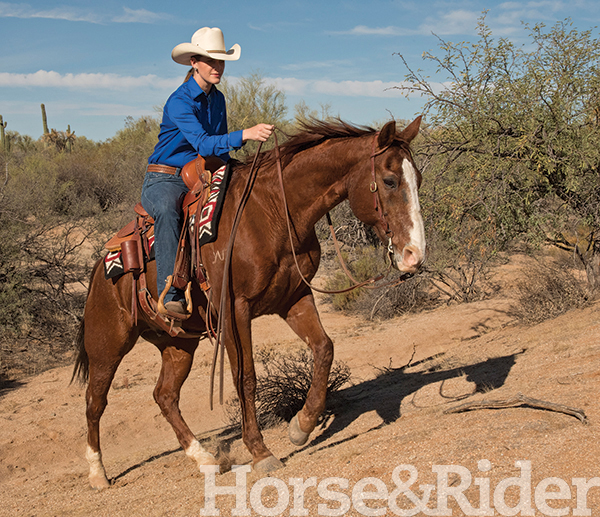
Exercise is as critical to an aging equine as it is to an aging human—and we’ve all heard how working up a sweat can turn back the clock and protect us from disease. Here, we’ll share tips for types of exercise your horse will find pleasurable as he engages in it, plus will help him feel good in general as it loosens, stretches, and strengthens him.
Note: If your senior horse is out of shape, check with your veterinarian about the types of work he’s capable of plus a schedule of phased-in conditioning.
Pamper your horse with these items; slow-feed hay net, magnetic sheet, joint supplements, and ceramic quick-wrap leg wraps.
Products we feature have been selected by our editorial staff. If you make a purchase using the links included, we may earn a commission. For more information click here.
Why Extra Exercise?
Although turnout is important for your senior horse (see “Permanent Turnout,”), he also needs exercise beyond just grazing and meandering around. Regular aerobic exercise improves his circulation, which makes it easier for digested nutrients to reach his muscles. Muscles that are consistently well-fueled and regularly worked atrophy less as aging continues.

Consistent exercise also strengthens your oldster’s bones, tendons, and ligaments, helping maintain healthy joints and sound legs and feet. It also fends off obesity, a risk factor that can lead to endocrine problems, including metabolic syndrome.
Finally, movement increases intestinal motility and reduces stress, both of which help ward off colic—the number-one killer of horses of any age.
Before we move on to some types of exercise your older horse will enjoy, a word about warming up.
Start Right
A proper warm-up maximizes the success of your older horse’s exercise program plus helps protect him from injury. Whether your horse is on a longe line, in the round pen, or under saddle, begin his warm-up with at least 10 to 15 minutes of easy-to-moderate walking. Start slowly and build walking speed gradually, allowing time for your horse’s breathing and heart rate to increase. If you’re riding, put him on a long rein and encourage him to relax.


As the blood flow to his muscles steps up, muscle fibers are warmed and strengthened. Meanwhile, his joints flex and tendons stretch gently, without injury, as they prepare for more vigorous exercise.
After the walking period—the end of which might include a little jogging—add time at a long trot, then easy lope, until your horse is thoroughly warmed up and can proceed to whatever else you have planned for him. Remember to cool him down after he’s done for the day, as well; this helps prevent stiffness and muscle soreness. (For more on a thorough warm-up, see the note at the end of this article.)
Stretch, Strengthen
While trotting and loping build your old guy’s aerobic capacity, other activities can stretch and strengthen his muscles and provide additional range-of-motion for his joints. These include:
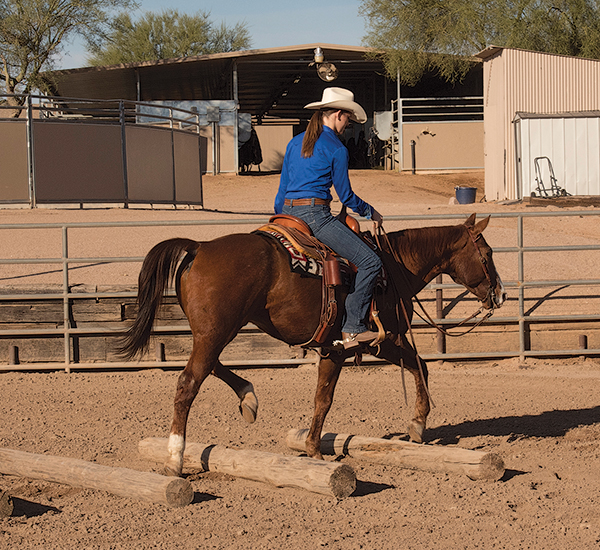
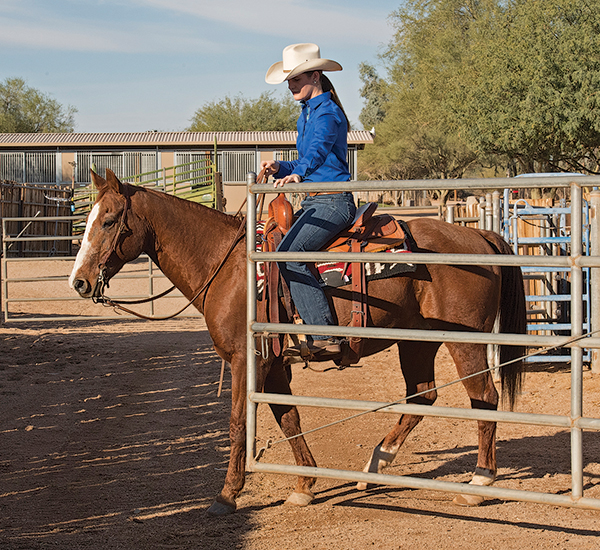
• Bending. Circles, turns, serpentines, spirals, figure-8s, and the like stretch your horse’s muscles along one side of his body—for example, as you circle or turn to the left, muscles along the right side of his body are stretched and made more supple. The smaller the circle or tighter the turn, the greater the stretch, so work incrementally. Vary the figures you ride to add interest and unpredictability to your senior horse’s workouts. And always be sure to work the same amount of time in both directions, so you stretch and supple both sides equally.
• Pole work. Walking and trotting over ground poles increases the flexion in all of your horse’s limb joints; this, in turn, helps improve and maintain the joints’ range of motion—especially important for older equines. Trotting poles, in particular, can be a lot of fun, too (“trot” over a few on foot and see for yourself). That means they have mental as well as physical benefits for your horse. To create trot poles, set from two to eight poles about 4 to 4½ feet apart, depending on the length of your horse’s stride. Then adjust the distances as necessary as you try the poles out.
• Lateral work. Asking your senior horse to move sideways provides a different kind of suppling as he reaches laterally underneath himself with his legs. Leg-yields and sidepassing are excellent lateral movements. (For refreshers on how to execute these, search the terms at HorseandRider.com.) Working a gate is another good maneuver requiring lateral movement.
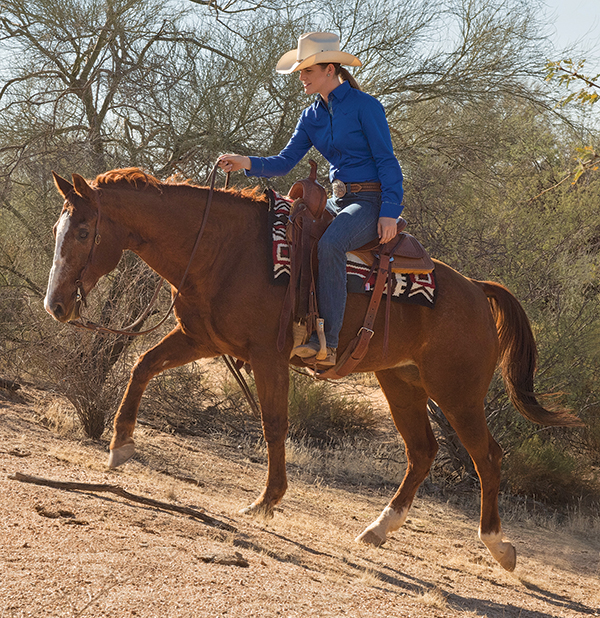
• Hill work. Trail riding provides horses of any age a pleasant change of pace and scenery. If you can add a little hill work into the trail mix, the benefits multiply. Going gently up and down hills will strengthen your senior horse’s hindquarters, tone his topline, and improve his balance. As with all new work, start slowly and increase it gradually to give your horse time to adapt without becoming overly sore.
Cue him to proceed deliberately both up and down hill—don’t let him plunge upward even if he wants to. Your position in the saddle going up and down should remain mostly upright. If you lean far forward going uphill, you weight your horse’s forehand; if you lean far back going downhill, you make it hard for your horse to get his hind end underneath himself to balance. Think of maintaining your upper body roughly parallel to the trees.
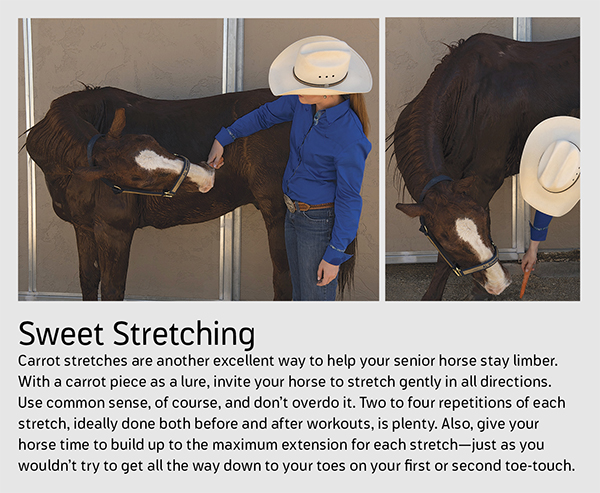
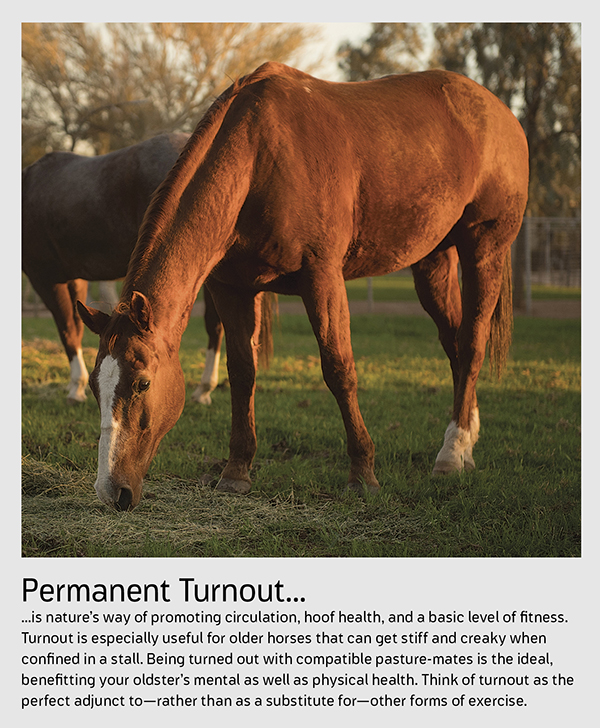
Give your oldster plenty of these kinds of activities on a regular basis, and he’ll be carrying you happily well into his senior years.
The editors wish to thank Kelsey Roderique and Quarter Horse gelding LB Texas Twist for serving as models for this feature. Kelsey is the operations manager at Al Dunning’s Almosta Ranch in Scottsdale, Arizona. Texas, 23 years young, is owned by Al Dunning’s daughter, McKenzie Parkinson.






